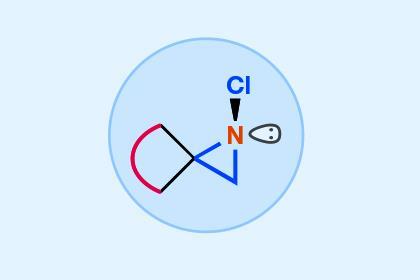
A straightforward asymmetric strategy has led to the creation of elusive nitrogen stereocentres. The carefully designed intramolecular reaction used substrate engineering to overcome the configurational instability that usually plagues chiral nitrogen structures, opening up a new landscape for enantioselective synthesis.
Despite their pyramidal structure, nitrogen compounds rarely exhibit chirality. The low barrier for pyramidal inversion quickly racemises any component enantiomers and, as a result, students are typically taught that nitrogen is not a stereogenic centre. Chemists have had some success locking a nitrogen atom into a single configuration in a sterically congested bridgehead or trapping the amine as a quaternary ammonium salt, but methods to access more general chiral unbridged amines have remained elusive.
Focusing on the energetics of this problem, Bin Tan and Kendall Houk at the Southern University of Science and Technology and University of California, Los Angeles, respectively, began exploring substrates that might raise the inversion barrier, enabling them to create these challenging chiral centres through a single stereospecific transformation. ‘Prior investigations indicate that the incorporation of electron-withdrawing substituents and angular constraint can effectively stabilise the pyramidal configuration at the [nitrogen] -stereogenic centre,’ explains Tan.
The team therefore envisaged an asymmetric chlorination of an alkoxyamine substrate, catalysed by a chiral phosphoric acid. This would produce a configurationally stable (although chemically unstable) N-chloro-alkoxyamine intermediate, thanks to the two heteroatoms increasing the energy of inversion. ‘The authors then planned to exploit this reactive intermediate in a stereospecific SN2 reaction, substituting the chlorine to produce a stable dialkoxyl, enantioenriched,’ explains Michael Tilby, a synthetic chemist at the University of Bristol who wasn’t involved in the work. ‘Their preliminary results indicated that the product was able to form, but with no enantioselectivity due to a racemising SN1-type process in operation.’
Unperturbed, Tan and Houk’s team re-engineered their alkoxyamine substrate, incorporating a gamma-hydroxy tether to favour an intramolecular SN2 process. The accelerated rate of this intramolecular trapping step successfully outcompeted the SN1 pathway, generating 1,2-oxaziridine products with greater than 90% enantiomeric excess.
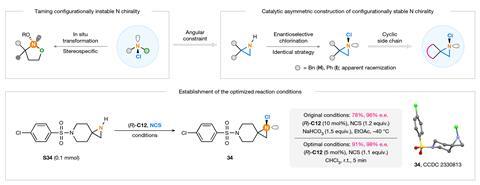
With a method in place, they next began to explore the scope of this asymmetric transformation. Electron-donating alkoxy substituents were well-tolerated, although withdrawing groups did reduce the enantiopurity, and the reaction was also compatible with carbon chiral centres, producing diastereomeric products in good ratios. ‘The system does require a specific scaffold but they do show a lot of complexity: some of the examples are spirocycles, they’ve got an example of a steroid – these are molecules which would be challenging to make,’ says Tilby.
Returning to their initial principle, Tan and Houk were also keen to investigate whether angular constraint could be harnessed to achieve similarly stable chiral centres via the same strategy. They trialled the optimised asymmetric chlorination conditions on aziridine substrates, quickly realising that incorporation of a cyclic sidechain was essential to stabilise the pyramidal nitrogen, and were able to isolate a variety of N-chlorinated spirocyclic aziridines in excellent enantiomeric excess.
While Tilby is impressed by the range and complexity of chiral nitrogen compounds Tan and Houk were able to produce, he believes the principle behind the work will have the greatest impact for the chemistry community. ‘This work shows a fundamental concept: that it is possible to produce stable nitrogen stereocentres by raising the barrier to inversion. This has the potential to change how we think of nitrogen stereocentres and we can now start unlocking their potential as reagents, catalysts and incorporation into drug molecules,’ he says.
Identifying applications for nitrogen chirality, both within organic synthesis and across the chemical sciences, will be an important next step, the researchers agree. With this proof-of-concept established, they are now working to generalise the strategy across other molecular scaffolds. ‘At present, isolable [nitrogen]-stereogenic molecules at room temperature are still limited to cyclic structures. Therefore, a crucial future research objective will be to delve deeper into the factors influencing stability of [nitrogen]-chirality, design novel acyclic molecules with higher inversion barriers and achieve their catalytic asymmetric synthesis,’ says Tan .
References
S Wu et al, Nature, 2025, DOI: 10.1038/s41586-025-09607-6



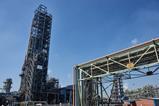


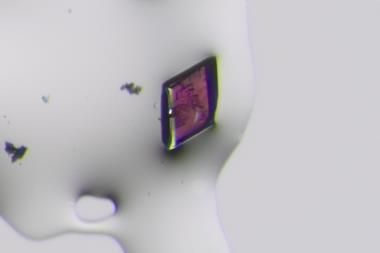
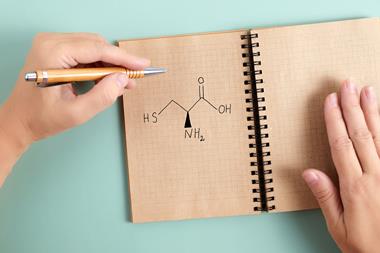
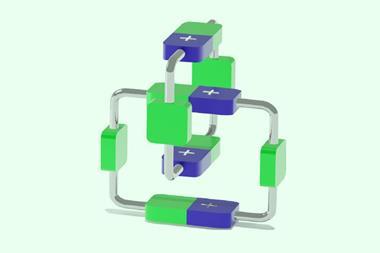
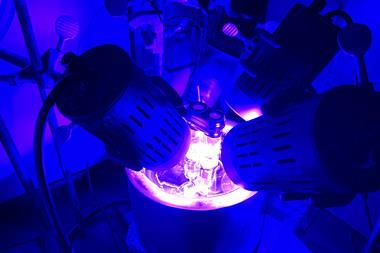




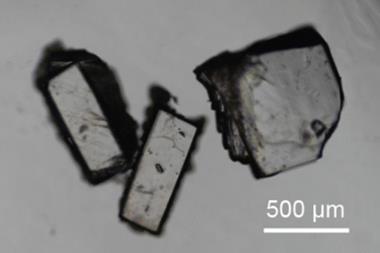


No comments yet